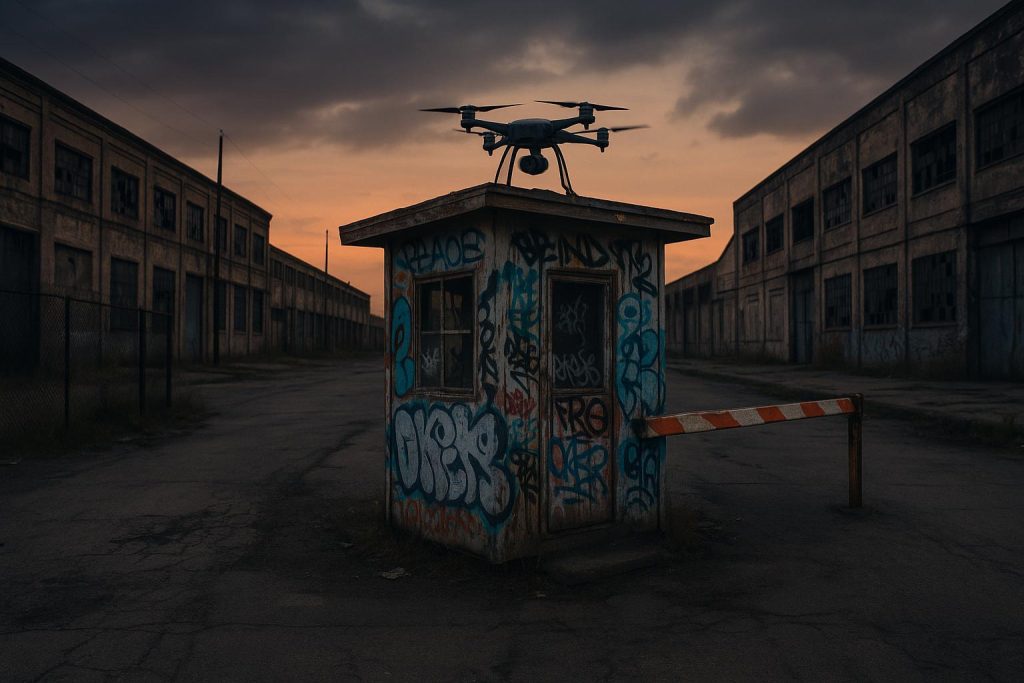Listen to the article
The drone cybersecurity sector is on the cusp of a dramatic expansion, propelled by technological innovations and regional governmental initiatives, with Asia leading the charge towards a more secure unmanned future.
The drone cybersecurity market is poised for significant expansion over the next decade, driven by the integration of unmanned aerial vehicles (UAVs) into critical sectors such as defense, logistics, agriculture, and surveillance. Valued at approximately USD 3.1 billion in 2025, the market is projected to surge to around USD 17.7 billion by 2035, reflecting a robust compound annual growth rate (CAGR) of about 19.0%. This growth underscores increasing concerns around cybersecurity risks, as drones become indispensable tools across commercial and military applications.
Between 2021 and 2025, the market experiences steady growth, expanding from USD 1.3 billion to USD 3.1 billion. This phase corresponds with rising awareness of cyber vulnerabilities in drone systems, including threats from data breaches, hacking, and privacy violations. Subsequent years up to 2030 see an acceleration in market development, with a value leap to USD 8.8 billion, buoyed by advances in encryption technology, intrusion detection, and autonomous threat mitigation capabilities. From 2031 to 2035, the market further escalates to USD 17.7 billion, supported by a persistent increase in drone usage and the intensification of cyber threats targeting these platforms.
Software security solutions constitute the leading segment within drone cybersecurity, accounting for nearly 37.4% of the market share in 2025. This dominance is largely due to the sophisticated reliance of drone operations on software components for navigation, communication, flight control, and mission management. Emerging trends such as AI-driven anomaly detection and blockchain-enhanced data integrity are amplifying the demand for agile, updateable software frameworks. Meanwhile, rotary wing drones—favoured for their vertical takeoff and precise manoeuvrability—make up the largest drone type segment with a 46.9% revenue share, reflecting their widespread use in surveillance, delivery, and reconnaissance missions that require strong cybersecurity defences.
The military and defense sectors represent the largest application segment, expected to capture over 31% of the market share by 2025. These sectors rely heavily on drones for intelligence, surveillance, and tactical operations, where the protection of sensitive data and uninterrupted functionality is paramount. Heightened cyber threats from state-sponsored actors and electronic warfare have led to significant investments in end-to-end encryption, secure communication links, and resilient cyber defence frameworks to safeguard unmanned systems on the battlefield.
Globally, the drone cybersecurity market’s growth is fuelled by regional advances and governmental initiatives. China leads with an impressive CAGR of 25.7%, stimulated by large-scale drone deployment in logistics, agriculture, and national defense, alongside aggressive investments in 5G and AI integrations. India follows closely with a 23.8% CAGR, driven by government regulation and expanding commercial drone applications across agriculture and security. Western nations such as France, the UK, and the USA also report strong growth, ranging from 16.2% to 20.0%, propelled by increased adoption in infrastructure monitoring, urban planning, and national security operations.
Despite burgeoning opportunities, the market faces challenges including high costs, regulatory complexities, and technical hurdles in securing autonomous drone systems. The need for real-time cybersecurity measures that can handle dynamic threat landscapes adds layers of difficulty to implementation. However, the rise of innovative technologies such as AI-powered monitoring, autonomous threat detection, and advanced encryption techniques offer promising solutions to these issues. Moreover, emerging service models like Drone Security as a Service (DSaaS) and cloud-based security frameworks are enabling scalable, cost-effective protection options, particularly benefiting smaller operators.
Prominent industry players such as Airspace Systems, Dedrone, DroneSec, Fortem Technologies, Mobilicom, Thales Group, and WhiteFox Defense Technologies are at the forefront of developing integrated surveillance, detection, and mitigation platforms. These companies leverage artificial intelligence, real-time monitoring, encrypted communications, and seamless infrastructure integration to deliver comprehensive cybersecurity solutions tailored to both commercial and defense drone ecosystems.
In conclusion, as drones become increasingly embedded in commercial operations, national security frameworks, and smart city infrastructures, the imperative for fortified cybersecurity solutions intensifies. The projected market growth reflects a collective recognition among stakeholders of the critical need to protect drone data, communication channels, and operational controls from escalating cyber threats, ensuring safe and reliable unmanned system deployments worldwide.
📌 Reference Map:
- – Paragraph 1 – [1], [7]
- – Paragraph 2 – [1], [2], [7]
- – Paragraph 3 – [1]
- – Paragraph 4 – [1]
- – Paragraph 5 – [1], [2], [7]
- – Paragraph 6 – [1]
- – Paragraph 7 – [1], [7]
- – Paragraph 8 – [1], [4], [7]
Source: Fuse Wire Services


